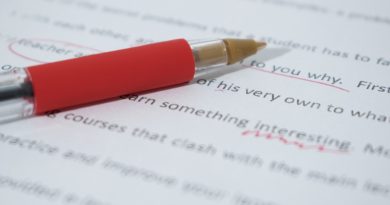Writing procedures: best practices
I once wrote a 16-page procedure describing how to start and shut down a video capture system consisting of multiple racks of equipment and two workstations.
Each device had to be started and shut down in a particular order and I had no idea how to do this myself. How should you tackle this sort of assignment?
#1. Get a project contact list – The first thing you should do when starting a new project is ask for a contact list with the names, job titles, phone numbers, and email addresses of everyone on the project. Get an organization chart also if you can. You must know who is who so you can find the person who can answer your questions.
#2. Schedule a demo – Find out who the subject matter expert (SME) is—for example, the person who actually starts and shuts down the system every day—and ask for a demonstration of the procedure. My project had two experts: the technician who ran the demo and the design engineer. Get someone who deals with customers to give the demo, if possible. Customer-oriented people usually stay away from internal design minutia that don’t matter. Don’t be discouraged if the SME has no time for you. Ask the SME’s manager to schedule time for the demo and make it clear that it is essential to your assignment. Getting a demonstration is often the biggest hurdle you will face.
#3. Ask for a verbal overview – Before the demonstration begins, ask for an overview of what you will be seeing, so that you can divide the procedure into sections. For example, the main sections to start the video capture system were: start the rack equipment beginning with rack #1, start workstation #1, and finally start workstation #2. Once I understood the big picture, I could fit everything into one of these sections.
#4. Record the demo – If possible before you begin, set up a digital video camera on a tripod and video the demonstration of the procedure so you can refer to it later. Don’t try to hold the video camera yourself or you will miss important information.
#5. Write down steps – While the SME is demonstrating the procedure, write down the steps as accurately as you can. As the SME starts a new series of steps, ask what the goal is and note that as a subheading. Don’t be afraid to ask the SME to pause while you catch up writing. Read aloud what you wrote and ask the SME if you captured it correctly.
#6. Take photos – After you have written down the procedure, go back and capture screenshots or photographs of relevant steps, if possible. It’s very difficult to capture screenshots or photographs during a live demonstration, because they take too long to set up. Stage the shots you need, making sure they match your procedure exactly.
#7. Check steps – After you have written the first draft of the procedure, check it yourself by going over each step (if possible) and making corrections.
#8. Test procedure – After you have revised the procedure, ask a person unfamiliar with the procedure to test it and mark any corrections. You don’t want the SME to test the procedure initially, because a person who is familiar with a procedure tends to skim it and overlook mistakes.
#9. Let SME review procedure – After you have revised the procedure a second time, give it to the SME and to other peers for review and incorporate any changes.
#10. Resolve discrepancies – Schedule a meeting to work out any discrepancies between how the SME performed the procedure and what the lead engineer wants.
#11. Release the procedure and adjust as needed – After the procedure is ready, release it to a small group of users and gather feedback on whether it is effective. Make adjustments as necessary.
Final tip: Never go anywhere without a pen and a pad of paper (just like a reporter), because often you will be given critical information when you least expect it.




